Case Study: Richstone Surfaces Elevates New Location with Lapitec Sintered Stone Cladding
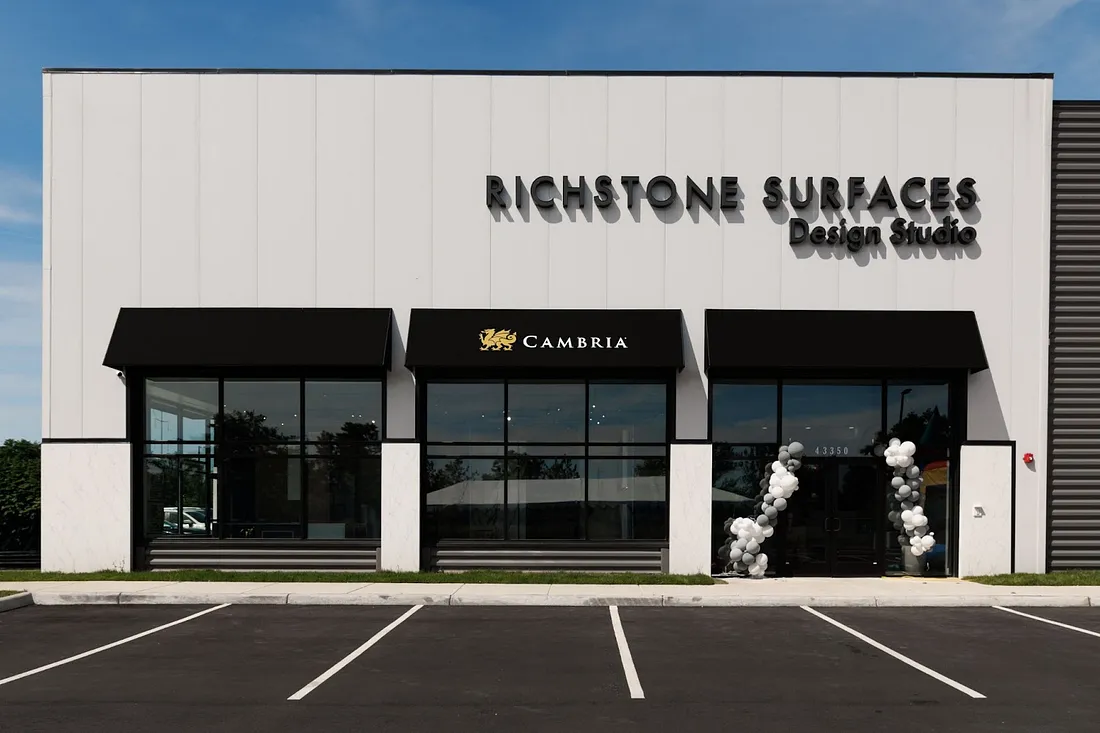
Lapitec Sintered Stone is a full-bodied material that combines the best qualities of natural stone with the advanced technological benefits of engineered surfaces. Composed of 100% natural minerals and free from resins and petroleum derivatives, Lapitec Sintered Stone is an environmentally friendly choice. Its durability, resistance to scratches, UV rays, and extreme temperatures make it suitable for both interior and exterior applications. Additionally, Lapitec Sintered Stone’s non-porous surface resists stains and makes it easy to clean, all while providing a sleek, sophisticated aesthetic that complements modern design trends.
Project Objective
Richstone Surfaces aimed to design a storefront that would capture the attention of both foot and road traffic, inviting potential customers to explore their business. With luxurious and modern kitchen and bath displays already in place, they wanted the building’s exterior to reflect the same high-end attention to detail. The objective was clear: the exterior had to match the sophistication and luxury of the interior, providing a modern yet timeless look. They sought a material that offered the clean and sophisticated aesthetic of marble without the worry of degradation over time or the high costs associated with natural stone.
Material Selection Rationale
After careful consideration, Richstone selected Lapitec Sintered Stone’s Bianco Giulia (2cm) with a satin finish for the exterior cladding. The decision was driven by several key factors:
- Marble Look Without the Maintenance: Richstone wanted the classical elegance of marble but had concerns about marble’s tendency to yellow, etch, and stain over time. Lapitec Sintered Stone offered the same luxurious look but with none of the maintenance issues, providing a clean, lasting appearance.
- Durability and Future-Proofing: As a company that handles many commercial projects, Richstone recognized the growing importance of using durable, and low-silica materials with sustainable properties. Lapitec Sintered Stone’s crystalline silica-free composition aligned perfectly with this vision, showcasing the company’s commitment to safer, future-focused material choices. By using Lapitec Sintered Stone for the facade, Richstone demonstrated the material’s potential to win future commercial projects.
- Aesthetic and Practical Benefits: The Bianco Giulia in satin finish offered a smooth, modern surface with the classical elegance of marble. Its non-porous and stain-resistant properties ensured the material would retain its beauty over time, making it an ideal choice for exterior cladding. The subtle reflection of light created a sophisticated, timeless look that enhanced the overall architectural design.
Why Lapitec Sintered Stone?
Richstone’s choice of Lapitec Sintered Stone was motivated by several standout features:
- Crystalline Silica-Free: Richstone prioritized a material that reduced health risks for workers and future residents. Lapitec Sintered Stone, being silica-free, ensured that safety was at the forefront of the decision. Explore the benefits of Chrystalline Silica-Free products in this interesting article.
- Durability: Resistant to UV rays, scratches, and harsh weather conditions, Lapitec Sintered Stone provided a robust exterior cladding solution. The non-porous surface ensured the material could withstand water and stains, making it ideal for the facade.
- Sustainability: Lapitec Sintered Stone’s 100% natural composition and recyclable nature supported Richstone’s commitment to environmental responsibility.
- Visual Appeal: The Bianco Giulia with a satin finish delivered an understated elegance that harmonized with the modern design of the building. The surface provided a luxurious aesthetic without overpowering the overall architectural look.
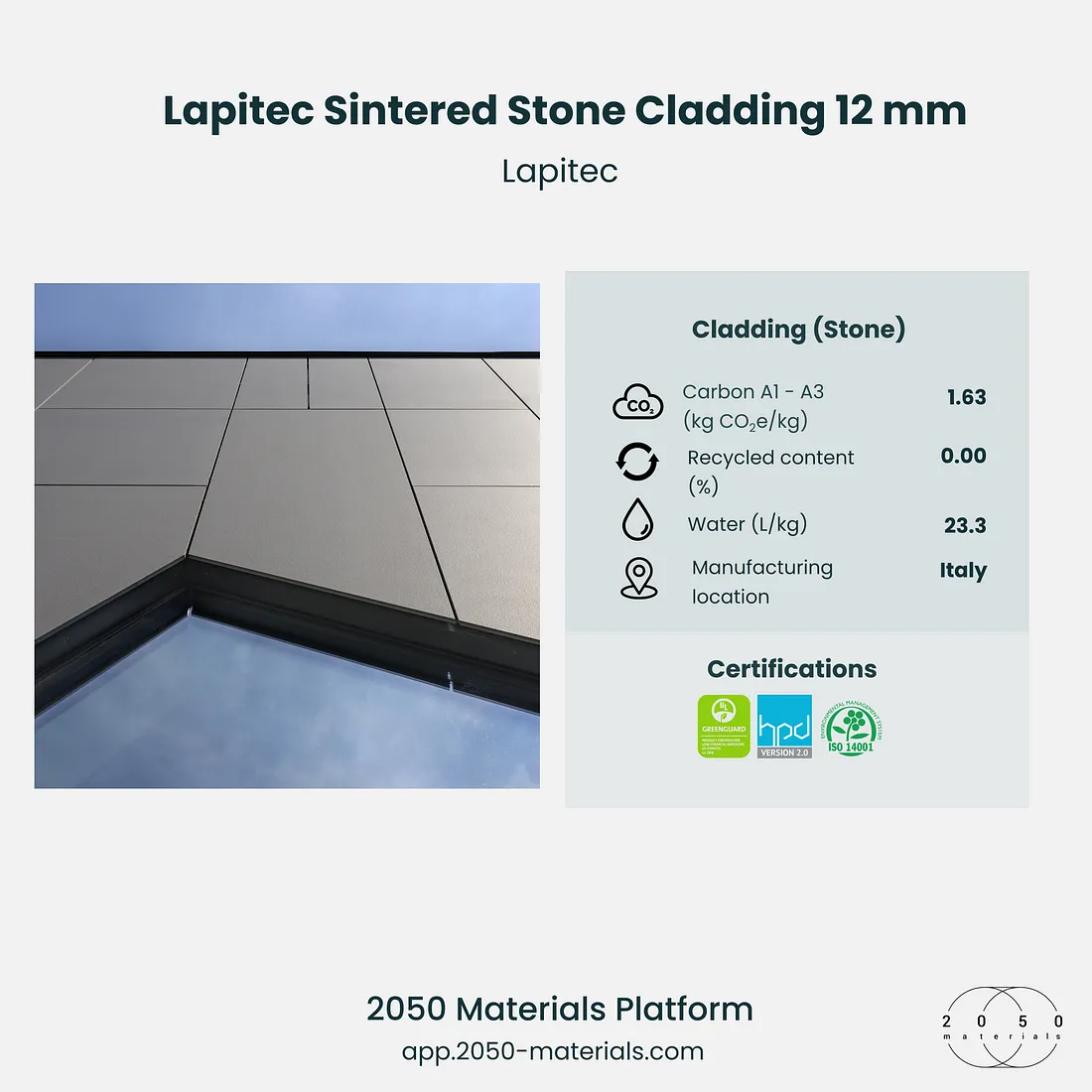
 “Lapitec Sintered Stone checks many of the boxes needed for material selection: 100% natural, environmentally sustainable, NSF certified, durable, withstands UV and high temperatures, low silica content, and also comes in a variety of clean and gorgeous designs and thicknesses to accommodate many different applications.”
“Lapitec Sintered Stone checks many of the boxes needed for material selection: 100% natural, environmentally sustainable, NSF certified, durable, withstands UV and high temperatures, low silica content, and also comes in a variety of clean and gorgeous designs and thicknesses to accommodate many different applications.”
Results
The installation of Lapitec Bianco Giulia provided Richstone with an eye-catching exterior that both drew attention and upheld the company’s values of durability and sustainability. The uniform thickness and ease of cutting reduced project time, while the material’s resistance to weathering and staining ensured that it would maintain its pristine appearance. Richstone successfully achieved a storefront that matched the interior’s luxurious displays while securing a long-lasting, low-maintenance facade that will serve as a model for future commercial projects.
Conclusion
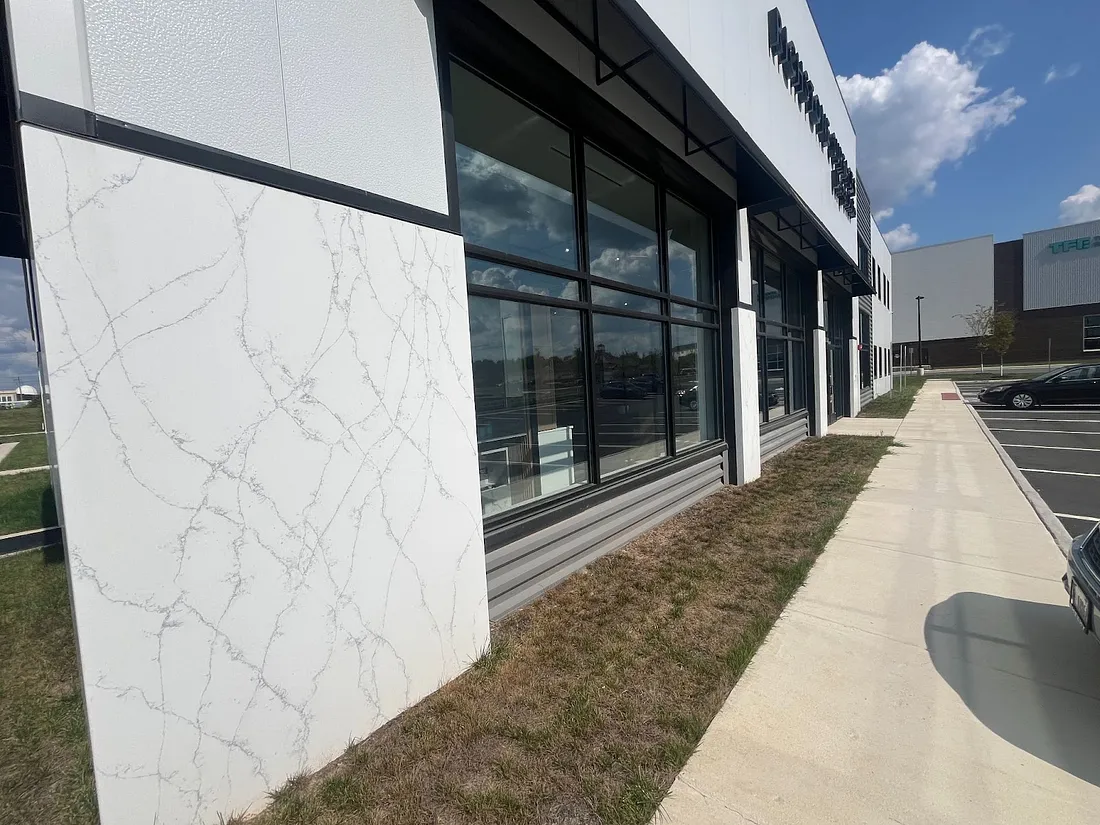
Richstone’s decision to use Lapitec Bianco Giulia 2cm satin finish for the exterior cladding resulted in a project that combined aesthetic elegance with functional durability. By selecting a crystalline silica-free material, Richstone not only enhanced the building’s visual appeal but also ensured the safety and sustainability of their choice, positioning themselves as leaders in modern, sustainable design.
Check the full range of Lapitec Sintered Stone on 2050 Materials platform here.
Related articles
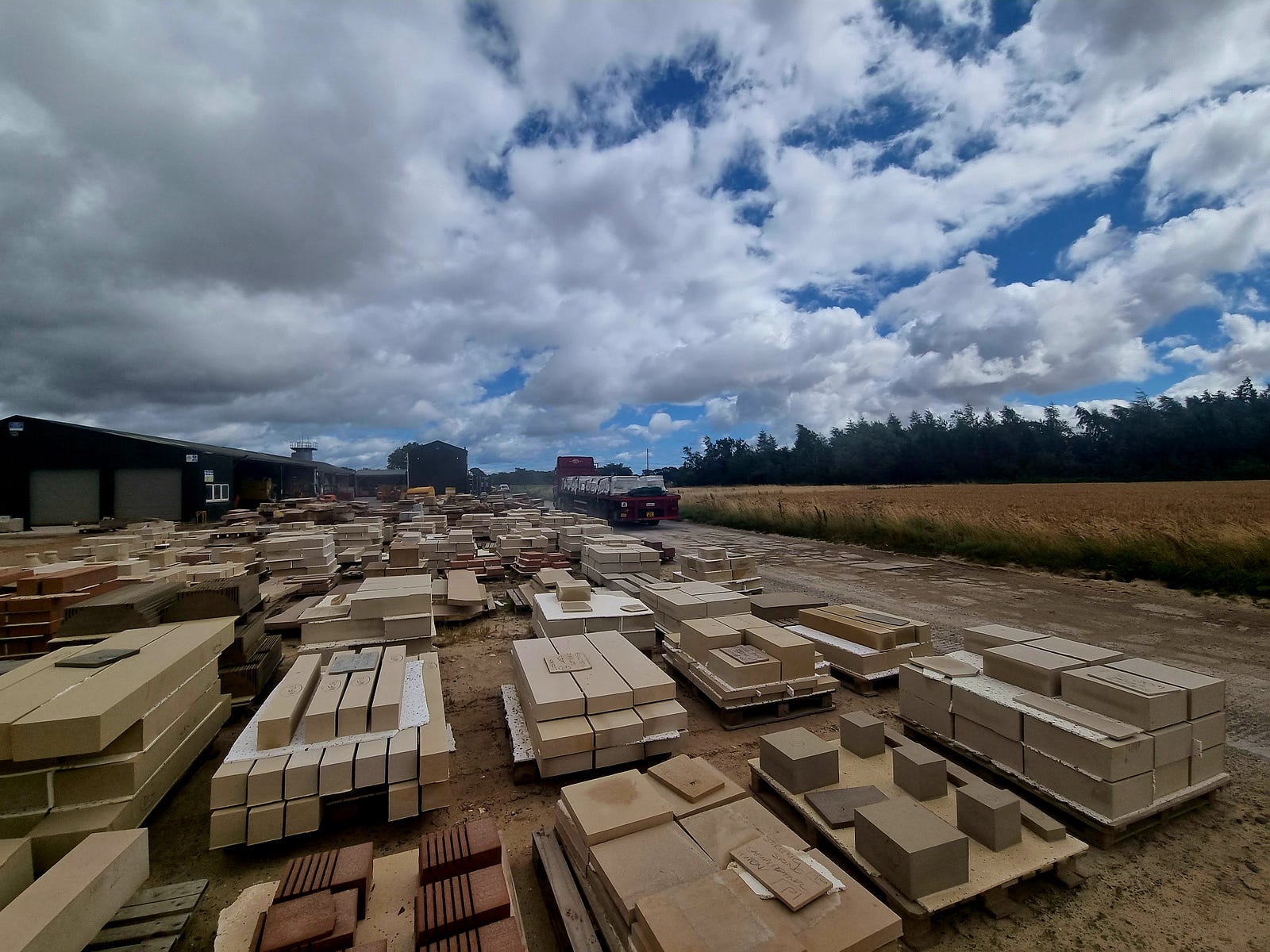
Building a Legacy with Hutton Stone
Hutton Stone, a heritage-driven quarrying company led by Marcus Paine, exemplifies how traditional materials can meet modern sustainability demands. From the careful stewardship of quarries to low-carbon innovations like split and sawn stone bricks, Hutton Stone merges architectural legacy with environmental responsibility. As part of the SME Climate Hub and the UK Ethical Stone Register, their operations demonstrate that ecological care and construction excellence are not mutually exclusive—but mutually reinforcing.
Read more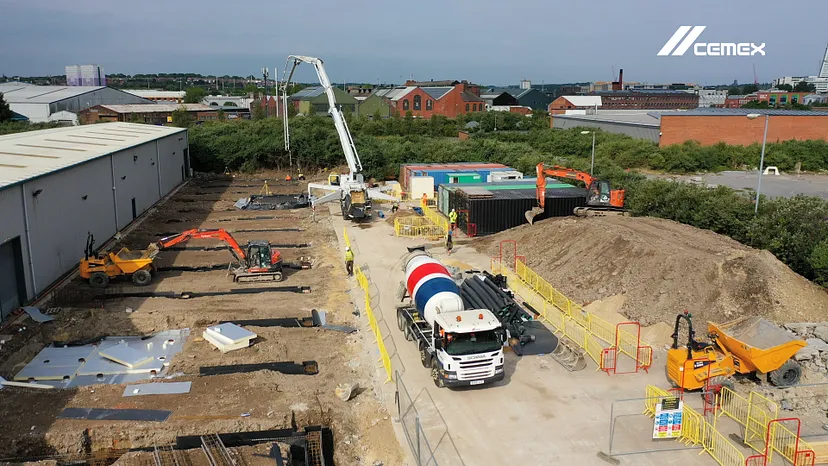
Case Study: Citu Climate Innovation District
As the desire to build lower carbon housing grows, Citu’s Climate Innovation District in Leeds stands as a blueprint for environmentally conscious development.
Read more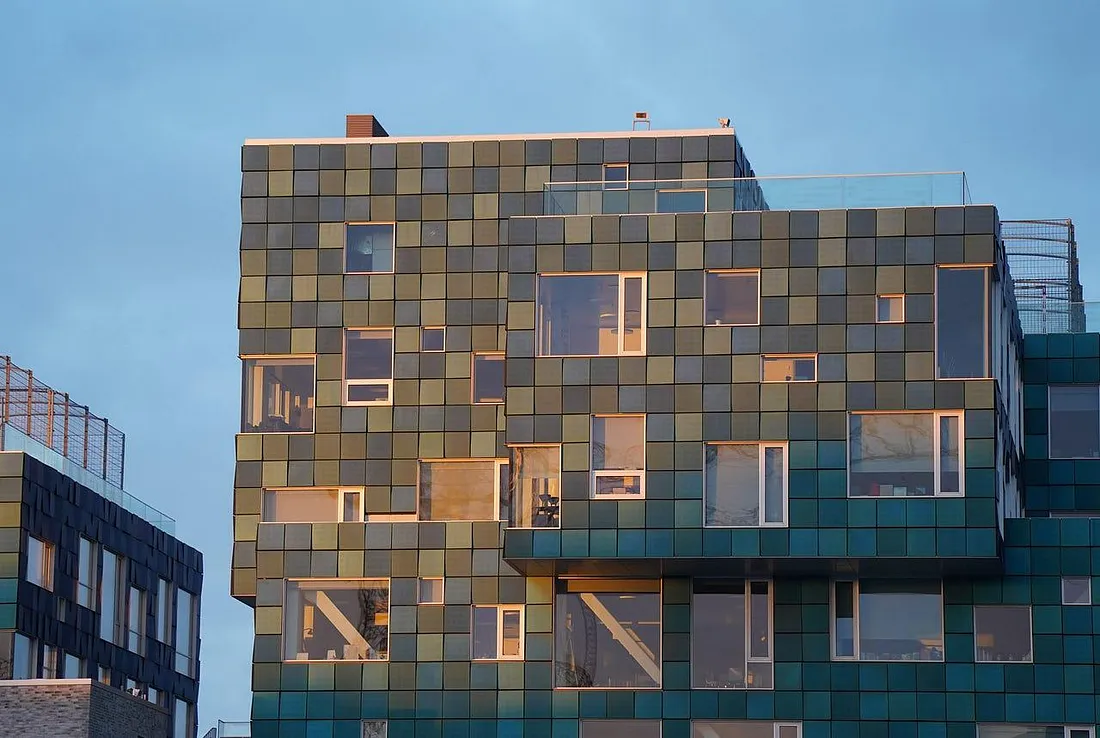
Harnessing Solar Power and Energy Efficiency: SolarLab’s Innovative Facade Solutions
SolarLab is harnessing solar power and energy efficiency providing an innovative solution that not only pays for itself but also generates energy.
Read more